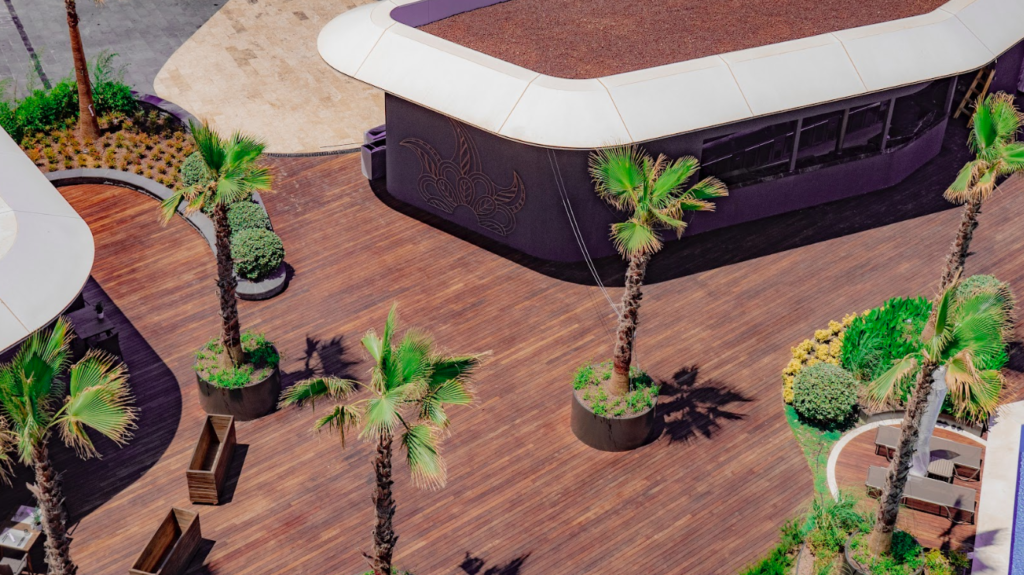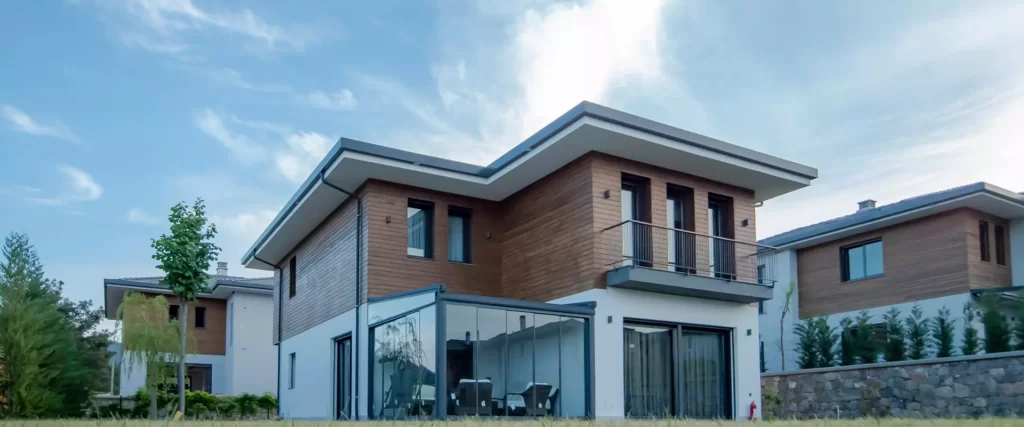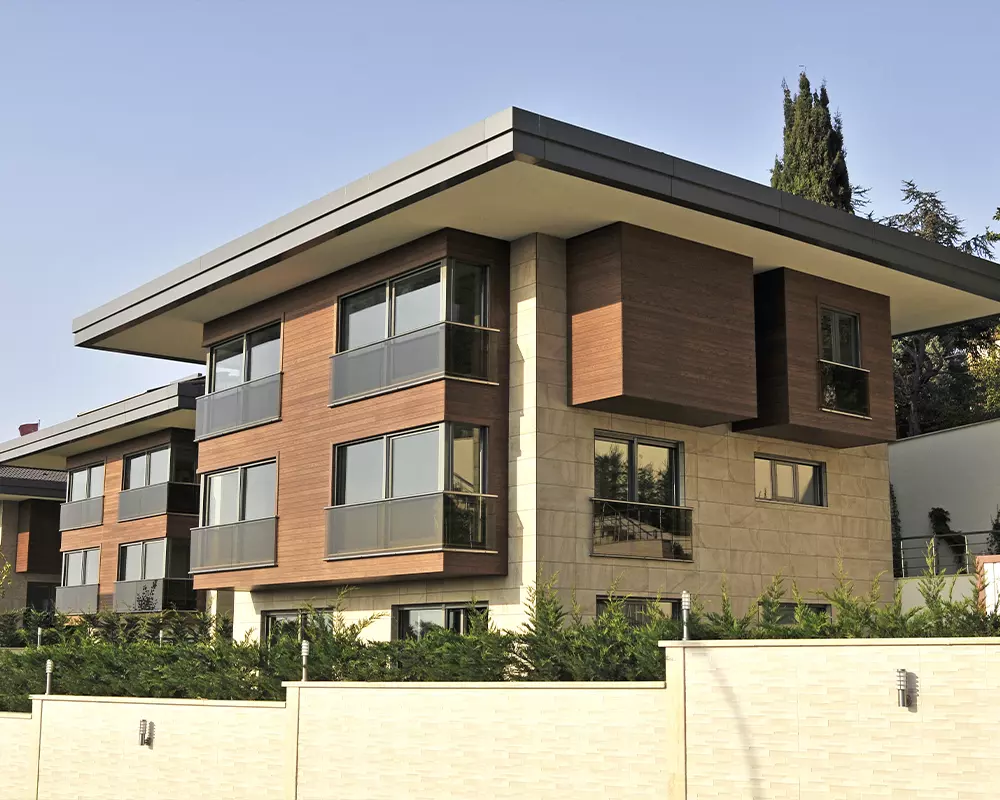Thermally modified wood is reshaping sustainable construction with its eco-friendly attributes and durability. As a chemical-free alternative to traditional materials, it meets the stringent requirements of green building certifications like LEED, WELL, and the Living Building Challenge.
Architects and builders are increasingly choosing thermally modified wood to create environmentally responsible, high-performance structures.
Understanding Green Certifications
Green building certifications set measurable benchmarks for sustainability, energy efficiency, and occupant well-being in construction projects. These certifications not only evaluate the environmental impact of materials but also consider how they contribute to healthier indoor environments and innovative design solutions.
- LEED (Leadership in Energy and Environmental Design): Recognized globally, LEED is a points-based certification system evaluating materials and construction practices. Thermally modified wood helps projects earn points in categories like Materials and Resources, Indoor Environmental Quality, and Innovation. Using wood products from sustainably managed forests and avoiding VOC-emitting materials aligns perfectly with LEED standards.
- WELL Building Standard: WELL focuses on the health and comfort of occupants by promoting materials that improve indoor air quality and encourage biophilic design. Thermally modified wood, free from harmful chemicals, supports WELL’s emphasis on non-toxic and sustainable materials. Its natural textures and tones also enhance spaces by fostering connections to nature.
- Living Building Challenge: This certification is among the most demanding, with stringent requirements for materials. Thermally modified wood meets the program’s criteria for the Materials Petal, which emphasizes chemical-free production and sustainable sourcing. Its durability and long-lasting performance also align with the program’s focus on reducing waste through extended material lifespans.
Green certifications provide a roadmap for creating buildings that benefit both the environment and their occupants. Incorporating thermally modified wood into projects is a practical way to meet these goals.
Thermally Modified Wood: A Sustainable Choice

Thermally modified wood undergoes a heat treatment that enhances its properties without introducing harmful chemicals. The process fundamentally alters the wood’s structure, delivering significant advantages for modern construction projects.
- Durability: Resistance to rot and pests ensures a long lifespan, minimizing maintenance and replacement needs.
- Dimensional Stability: Reduced swelling and shrinking make it reliable in changing climates.
- Visual Appeal: The process produces rich, uniform tones that lend themselves to diverse aesthetic styles.
These characteristics make thermally modified wood a valuable choice for builders prioritizing sustainability and performance.
Supporting Green Building Certifications with Thermally Modified Wood
Thermally modified wood is uniquely positioned to contribute to multiple categories in green certification programs. Its sustainable attributes ensure compliance with the rigorous requirements of these frameworks.
LEED Certification
Thermally modified wood plays a significant role in earning LEED points:
- Materials and Resources: Responsibly sourced wood supports sustainable procurement practices. LEED encourages using FSC-certified products, which thermally modified wood often meets.
- Indoor Environmental Quality: Chemical-free materials like thermally modified wood improve air quality, creating healthier indoor spaces.
- Innovation: Using thermally modified wood as a versatile and sustainable material demonstrates creative and forward-thinking design approaches.
WELL Building Standard
WELL prioritizes occupant health and comfort, focusing on materials that create safe and welcoming environments:
- Toxicity-Free Materials: Thermally modified wood avoids the use of harmful chemicals, aligning with WELL’s emphasis on safer indoor spaces.
- Biophilic Enhancements: Its natural appearance and texture promote connections to the outdoors, supporting WELL’s biophilic design principles.
Living Building Challenge
The Living Building Challenge’s strict requirements make thermally modified wood a natural fit:
- Materials Petal: Products must avoid chemicals on the Red List and be sustainably sourced. Thermally modified wood meets these standards while offering durability and longevity.
- Waste Reduction: Its extended lifespan reduces material turnover, aligning with the program’s goals to minimize waste over time.
These contributions make thermally modified wood an indispensable resource for achieving green certification objectives.
Applications of Thermally Modified Wood
The adaptability of thermally modified wood makes it suitable for a wide range of construction and design applications.
Exterior Applications
- Siding and Cladding: Ideal for rainscreens and facades, thermally modified wood provides weather resistance and a natural aesthetic.
- Decking: Durable and moisture-resistant, it performs well in outdoor environments, including high-traffic areas.
Interior Applications
- Flooring: Its dimensional stability ensures it remains resistant to warping in climate-controlled spaces.
- Wall and Ceiling Paneling: The rich, uniform tones of thermally modified wood add warmth and elegance to modern interiors.
By accommodating both functional and visual needs, thermally modified wood is versatile enough to enhance any space.
Selecting and Installing Thermally Modified Wood

Proper selection and installation are key to optimizing thermally modified wood’s performance.
Species Selection
Choosing the right species ensures that the wood meets the functional and aesthetic needs of your project.
- Thermo Pine: Lightweight and versatile, it is ideal for cladding and decking applications.
- Thermo Ayous: Known for its smooth texture and uniform appearance, it works well for interior paneling and furniture.
- Thermo Ash: Durable and strong, this species is suitable for high-traffic areas and structural applications.
Installation Tips
- Allow the wood to acclimate to the project site before installation to prevent dimensional changes.
- Use corrosion-resistant fasteners to maintain appearance and structural integrity.
Maintenance
- Regular cleaning with mild soap and water ensures longevity.
- UV-protective finishes can help retain the wood’s rich color over time.
With thoughtful planning and care, thermally modified wood will provide long-lasting value and performance.
Expanding Sustainability in Construction
Thermally modified wood offers an opportunity to exceed sustainability goals while meeting certification standards. Its chemical-free production, paired with FSC-certified sourcing, supports environmentally friendly practices. Furthermore, its natural insulating properties and compatibility with water-based finishes align with energy efficiency and eco-conscious construction strategies.
Aligning Material Choices with Sustainability Goals
The right materials can shape the success of a green building project. Discover more about how thermally modified wood can advance your sustainability goals.


